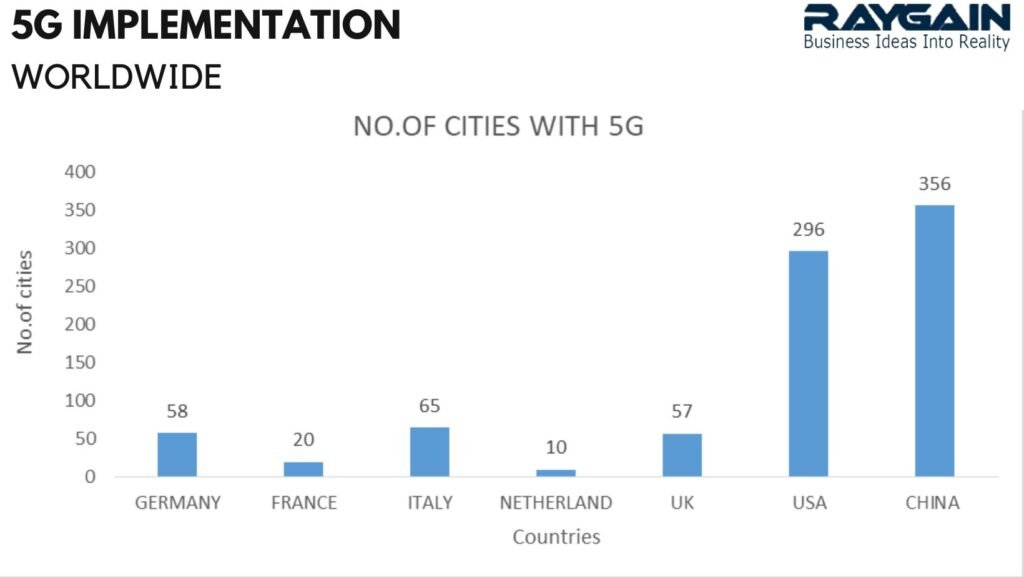Benefit of React JS Development

Benefit of React JS application
4 Reasons Why Developer love React Native For Mobile Apps Development

What is React Native React Native is a native version of the JavaScript library. The most popular Mobile App Development technology in the market. React native has gained huge popularity among the developer community. For the many past years, we have worked HTML and Javascript but react native is the combination of both the languages such as HTML and Javascript. As you probably know, there is so much multi-platform and others technology for mobile apps development solutions such as PhoneGap, Cordova. But the react native mobile apps development is one of the most popular mobile app development trends to follow in the market. We believe that React Native will be the future of Mobile Apps development here are the 5 reasons why developer love React Native. Great Development Environment While working with React Native, developers have a great development environment. Attractive features like hot reloading attract the developers to work with React native app development. Mainly it removes your negative thinking and developers can easily develop the application. Cross-Platform Compatibility The major reason why the developers love React Native is that react native APIs are cross-platform. Basically, the compatibility with cross-platform APIs is a major benefit of React Native which means your one component will work on both Android and iOS. The compatibility gives a developer to freedom to create applications does not matter for the code line because it will work on both iOS as well as Android platform. Easy to Learn The benefit of easy to learn is always a good thing because that gives the strength to learn React Native platform. You can easily learn and handle React Native applications, the addition of frameworks give a glance benefit that a developer uses it while developing a react native application. You can easily familiar with react native because it does not require a handy knowledge of code line. If you know Javascript that means you’re always ahead in the race to learn to react to native development services. Faster Development Cycle React native makes the developing process much faster as compared to the other platforms. Mainly the widely spread community of reacting native support react, and being an open source that means there are a lot of components available for use. That makes the process of developing the app much faster and really beneficial in term of time. Conclusion I think there is no doubt about React Native because it makes developing mobile apps a breeze. While working with React Native the high quality of reacting native application always gives a motive to the developed application via using React mobile apps development. There are lots of company switching to React Native.
5 Latest Technologies in Software Industries

Here are some Latest Technologies in Software Industries include innovations in several fields: These trends highlight the growing integration of AI, advanced computing, and wearable tech in daily life, making technology more accessible and impactful.
Empower Your Digital Life: Cyber Security Basics

WHAT IS CYBER SECURITY Cyber Security is the practice of protecting and defending systems, networks, programs, data and devices from malicious digital attacks. This starts with preventing unauthorised access, which could be part of coordinated cyber attacks and other digital threats against a company. These cyberattacks are usually aimed at assessing, changing, or destroying sensitive information, extorting money from users, or interrupting normal business processes. Cyber security is essential for maintaining the privacy and integrity of personal and sensitive information, ensuring business continuity and complying with legal requirements, it protects against financial losses, legal penalties etc. BRIEF HISTORY AND EVOLUTION OF CYBERSECURITY Early Days (1960s-1970s): The Internet Age (1980s-1990s): Modern Era (2000s-Present): Common Cyber Threats 1. Malware (Viruses, Trojans, Ransomware): 2. Phishing Attacks: 3. Denial-of-Service (DoS) Attacks: 4. Man-in-the-Middle (MitM) Attacks: 5. Zero-Day Exploits: 6. Insider Threats: CENTRAL THEME OF CYBERSECURITY 1. The CIA Triad: The Cornerstone of Security Imagine your bank statements or medical records – they should only be accessible to you and authorised personnel. This principle is captured in the CIA Triad, the foundation of cybersecurity: 2. Access Control: Who Gets In? Think of a high-security building. Access control determines who can enter specific areas. In cybersecurity, it defines who can access what information and systems: 3. Encryption and Decryption: Keeping Secrets Safe This acts like a password: 4. Firewalls and Intrusion Detection Systems: Building Your Digital Castle Firewalls and Intrusion Detection Systems (IDS) work together to protect your system: 6.Encryption This scrambles data using algorithms, making it unreadable by unauthorised users. Imagine encrypting your emails so only the recipient with the decryption key can understand them. FIREWALL A firewall is essentially a gatekeeper for your computer network. It acts as a security system that monitors incoming and outgoing traffic, deciding whether to allow or block it based on set rules. Firewalls can be hardware devices, software programs, or even a combination of both. Firewalls are a crucial first line of defense in cybersecurity, but it’s important to remember that they’re not foolproof. For comprehensive protection, firewalls are often used alongside other security measures like anti-virus software and intrusion detection systems.. HOW DO FIREWALL WORKS TYPES OF FIREWALL WHY FIREWALL IS USED BENEFITS OF FIREWALL 1. Promotes Privacy and Security: It offers enhanced security and privacy from vulnerable services. It stops unauthorised users from accessing a private network that is linked to the Internet. 2. Monitors Network Traffic: The firewall monitors the data from where it comes in and out of your system. 3. Prevent Virus Attack: It secures your system from a phishing attack. A firewall can prevent a hacker entirely or deter them from becoming easy targets. OEM OF FIREWALL OEM stands for Original Equipment Manufacturer. In the business world, it refers to a company that manufactures parts or products that are then sold by another company under their own brand name. These companies often specialise in creating specific components and may not have the resources or desire to develop and sell finished products themselves. Some original equipment manufacturers of firewall are: CONCLUSION Cybersecurity may seem like a complex topic, but by understanding the basic Cyber Hygiene principles and taking some essential steps, you can significantly improve your online safety. Remember, even small measures can make a big difference.
Cloud Services :Model , Advantages and Challenges

Cloud services are different types of services that include infrastructure, software application and platforms which are provided by some third party providers over the internet. Linux is the most widely used cloud computing operating system as it runs about 90% of the public cloud workload and is also used by nine of the top ten cloud service providers. One of the biggest benefits of cloud computing is the pay-as-you-go model. Companies known as “third-party providers” let you use their powerful computers. You pay them for using it but you do not have to buy or care about the computer itself. This blog delivers a brief, comprehensive insight into the present status of cloud services, based on real facts, statistics, and insights into the benefits and challenges behind them, against a bold relief provided by pre-cloud and cloud-enabled eras. The Era Before the Cloud: Challenges and Limitations. High Capital Spending: Companies needed to make huge investments in physical hardware, purchasing servers, storage, and networking equipment. This was a significant barrier, especially to the SMEs. Scalability problems: Scaling up operations needed investment in more hardware, which proved to be time-consuming and rather expensive.. Maintenance and Management: Running infrastructure in companies, needed dedicated IT staff for hardware maintenance, software updating, and deployment of security patches, resources that might have been diverted from the main business activities. Disaster Recovery: Setting up a robust disaster recovery solution was challenging and proved to be expensive. Businesses faced difficulties in ensuring data backup and continuity during disasters. Collaboration Limitations: Geographically dispersed teams could not collaborate owing to the lack of central, accessible platforms. The Cloud Computing Era: A Transformation with Advantages. Market Overview and Growth: Growing, the global cloud services market reached $368.97 billion in 2021 and is predicted to increase to $832.1 billion by 2025 at a CAGR of 17.5%. This growth comes on the heels of an ever-increasing trend in the adoption rate of cloud technologies across industries. Adoption Rates by Industry: Different sectors are embracing cloud services to leverage their unique advantages: Financial Services: 89% of financial institutions report using cloud services to provide increased advanced security and smoother operations. Healthcare: 83% of healthcare organisations have implemented cloud solutions across EHR and telemedicine. Retail: 78% of retailers employ the cloud in managing inventories and tailored marketing activities. Manufacturing: 71% of the manufacturing companies currently use cloud-based solutions for supply chain management and in predictive maintenance. Top Cloud Service Providers It is the largest provider, with comprehensive services and continuous innovation. AWS comes in at 32% of the market share. Microsoft Azure has a 20% market share, where most of the work goes toward easy integration with Microsoft products, making it a strong enterprise sector contender. Google Cloud Platform (GCP) holds 9% of the market, distinguished by its capabilities in data analytics and machine learning. Cloud Service Models Advantages of Cloud Services Cost Efficiency: Reduces the need for on-premises hardware and maintenance, leading to significant cost savings. Scalability: Provides on-demand scalability, therefore allowing each business to scale its resources based on demand. Disaster Recovery: Provides the tools and solutions for data backup and recovery, ensuring maximum continuity of business in a digital workplace. Collaboration: This facilitates seamless workflows between remotely located teams, hence improving productivity. Security: Leading providers spend a considerable amount of time and money keeping advanced security measures in place to tackle cyber threats. Challenges of Cloud Services Data security and privacy: The threat of data breaches and sticking with regulations about data protection remain key concerns. Cost Management: Without the right controls in place, cloud spend may get out of hand fairly rapidly. Integration: The cloud services can be tricky to integrate with the already existing IT infrastructure. Vendor Lock-In: The company may not be able to change vendors because it depends upon the technologies that a specific vendor provides. AI and Machine Learning: Cloud AI has to overcome challenges in data privacy, security, cost, and experts with suitable expertise. Serverless Computing: Developers only need to deal with the code, leaving behind the problem of infrastructure management. Conclusion Cloud Services is a powerful tool for business to change and grow. Cloud computing helped companies migrate from slow and expensive old ways of doing things to faster, smarter, and cheaper new ways. Though there are some challenges in cloud technology, it is of such high importance that the business world needs to learn about it or how to use it to stay successful in this Digital Age.
The Role of AI in Modern Automation

Introduction Artificial Intelligence (AI) is transforming the landscape of modern automation, driving efficiency, innovation, and productivity across various industries. As businesses strive to stay competitive in an increasingly digital world, AI-powered automation is becoming indispensable. This blog delves into the role of AI in modern automation, supported by data, statistics, and real-world applications. The Rise of AI in Automation AI, encompassing machine learning (ML), natural language processing (NLP), and computer vision, is at the forefront of the automation revolution. According to a report by McKinsey, AI could potentially deliver up to $13 trillion in additional global economic activity by 2030, boosting global GDP by about 1.2% annually. Pros and Cons of Artificial Intelligence Integration Pros Cons Maximize Your Return Implementing AI in automation not only cuts operational costs but also delivers substantial returns on investment (ROI). According to a survey by Deloitte, companies leveraging AI technologies in their business processes have seen an average cost reduction of 22% and a revenue increase of 17%. Additionally, the International Data Corporation (IDC) predicts that worldwide spending on AI systems will reach $97.9 billion in 2023, more than 2.5 times the spending level of 2019. Use Cases 1. Manufacturing. 2. Supply Chain Management 3. Customer Service 4. Finance and Security 5. Healthcare Medical Diagnosis AI algorithms can help doctors diagnose diseases with sometimes even 90% accuracy, hence providing patients with earlier and more effective treatment. (Sources: https://med.stanford.edu/healthcare-ai.html.) The Economic Impact of Automation – Modern Automation Positive Impacts Negative Impacts Technology users: Then and Now – Modern Automation Earlier Times Today Workforce Transformation – Modern Automation AI is reshaping the workforce, augmenting human capabilities rather than replacing jobs. The World Economic Forum’s Future of Jobs Report 2020 estimates that by 2025, AI will create 97 million new jobs while displacing 85 million, resulting in a net gain of 12 million jobs. AI-powered tools are enabling employees to focus on more strategic, creative, and value-added tasks, enhancing overall job satisfaction and productivity. AI’s Impact on Key Sectors Challenges and Considerations Despite its advantages, integrating AI into automation poses challenges. Data privacy, algorithmic bias, and the need for significant investment in technology and training are key considerations. Ensuring ethical AI practices and addressing these challenges is crucial for sustainable and responsible AI deployment. Conclusion AI and Modern Automation are powerful forces that will set the course of the future. By recognizing their advantages along with challenges, we can empower an innovative, prosperous, and inclusive world for a richer job market.
Top RAN OEM Vendors for Private 5g

As the demand for private 5G networks continues to grow in India, it becomes essential to choose the right Radio Access Network (RAN) OEM vendor that can meet their for businesses specific needs…….
World Wide 5G Implementation: A New Era of Connectivity

The advent of 5G technology heralds a monumental shift in global connectivity, promising unparalleled speed, reliability, and minimal latency…..
How To Tackle Big Data Challenges

In today’s data-driven world, harnessing the power of big data is crucial for businesses to gain valuable insights and make informed decisions. However, along with the vast opportunities big data presents,……
Comparison Between ASP.NET and PHP

ASP.NET, developed by Microsoft, is a powerful framework for building dynamic websites and applications. It provides a robust and scalable platform that allows developers to create high-performance web applications……
